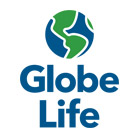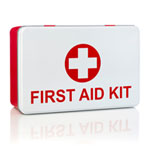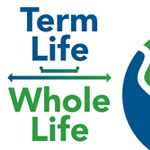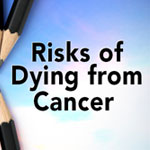How Does Accidental Death Insurance Work?

How Does Accidental Death Insurance Work?
Insurance helps protect against losses resulting from car accidents, health issues and other unfortunate events life may throw your way. The average consumer may have multiple insurance policies throughout their lifetime. Sometimes it can be tricky knowing which types of insurance you need and how much coverage you should get.
You may have heard about accidental death and dismemberment insurance through a job, a family member, a TV commercial or an internet ad. But what exactly is it, how is it different from regular life insurance, and how does it work?

What is Accidental Death and Dismemberment Insurance?
Accidental death and dismemberment insurance (AD&D) offers coverage for when the unexpected occurs, such as a life-altering injury or accidental death. With regular life insurance, the beneficiary will receive the death benefits funds if the insured dies within a term (term life insurance) or at any time (whole life insurance). The payout of the benefits is typically not dependent on the cause of the insured’s death.
AD&D policies can be relatively inexpensive when compared to regular life insurance policies. They can be purchased as stand-alone policies or as riders. Riders are also commonly referred to as double indemnity riders. With an AD&D rider, the designated beneficiary would receive benefits from both the regular life insurance policy and the rider, should the insured’s death fall into the category of accidental as defined by the rider.
In additional to accidental death, AD&D policies cover the insured in the event of dismemberment or other covered life-altering injury. Since AD&D covers two categories of possible events, each is discussed in more detail below.
Accidental Death: How Does It Work?
Typically, the benefits for AD&D are capped at less than what you can get with a traditional life insurance policy. For this reason, many opt to have a regular life insurance policy in place with an AD&D policy as additional coverage. The obvious question is “what constitutes an accidental death”
Before purchasing AD&D, it is critical to review the coverage restrictions. Most AD&D policies cover car accidents, exposure to elements, falls and drowning. Common exclusions include deaths resulting from drug overdoses and suicide. Deaths deemed from natural causes, including heart attacks and strokes, would not be covered under AD&D insurance.
Dismemberment: How Does it Work?
When you purchase an AD&D policy, the policy will have a face amount. During the term of the policy, policies will pay out 100 percent of that amount for accidental death. AD&D policies also pay out a percentage for covered life-altering injuries such as loss of limb (dismemberment) and paralysis, as well as loss of hearing, sight, speech, or use of specific body parts. Not all injuries, even serious ones, will be covered. Again, it is critical to carefully read your policy to understand what is covered and what isn’t.
Filing an AD&D Claim
In the event of a policyholder’s death, the named beneficiaries would receive the payout. Most regular life insurance policies require proof of the insured’s death in the form of a death certificate. The beneficiary might also need to provide the insurance company with updated personal information.
Accidental death policies work differently. Insurance companies cannot pay claims until they have received the documentation necessary to prove that the death was, indeed, accidental. Documentation might include a death certificate, police reports and medical examiner reports.
In cases of dismemberment or other covered injuries, it is the insured who would file to collect the money. In most cases, these payouts are only a portion of the policy’s face amount. In fact, it is unlikely that the insured would ever receive the full benefit unless they suffered serious and multiple covered injuries.
Accidental death and dismemberment insurance can’t take the place of a regular life insurance policy, as deaths from natural causes aren’t covered. What they can do is provide additional coverage for your loved ones in the event of your accidental death and provide you with a financial lifeline if you suffer an injury covered by the policy.
You might also be interested in...
-
 10 Signs You May Not Be Drinking Enough Water
10 Signs You May Not Be Drinking Enough Water
-
 8 Signs You May Not Be Getting Enough Magnesium
8 Signs You May Not Be Getting Enough Magnesium
-
 About Life Insurance
About Life Insurance
-
 Do You Really Need Life Insurance?
Do You Really Need Life Insurance?
-
 Does Divorce Spell The End Of A Happy Childhood
Does Divorce Spell The End Of A Happy Childhood
-
 Globe Life is Rated A (Excellent)
Globe Life is Rated A (Excellent)
-
 Health Symptoms You Should Never Ignore
Health Symptoms You Should Never Ignore
-
 History of Life Insurance
History of Life Insurance
-
 Home Cough Remedies
Home Cough Remedies
-
 How High Should Your SPF Be
How High Should Your SPF Be
-
 How To Be Responsible About Life Insurance
How To Be Responsible About Life Insurance
-
 Is Eating Organic Really Safer?
Is Eating Organic Really Safer?
-
 Is White Vinegar A Safe Cleaning Agent?
Is White Vinegar A Safe Cleaning Agent?
-
 Planning Your Family For An Emergency Evacuation
Planning Your Family For An Emergency Evacuation
-
 The Difference Between Power Of Attorney And A Living Will
The Difference Between Power Of Attorney And A Living Will
-
 Reconsider Getting a Life Insurance Policy
Reconsider Getting a Life Insurance Policy
-
 Setting Goals For Your Employees
Setting Goals For Your Employees
-
 Skills that Make Bosses Want to Hire You
Skills that Make Bosses Want to Hire You
-
 The Importance of Life Insurance
The Importance of Life Insurance
-
 The Importance of Term Life Insurance
The Importance of Term Life Insurance
-
 Is It Time To Review Your Life Insurance Policy?
Is It Time To Review Your Life Insurance Policy?
-
 Tips On How To Prevent E.coli
Tips On How To Prevent E.coli
-
 Too Busy to Stay Healthy?
Too Busy to Stay Healthy?
-
 What Is COPD And How You Can Prevent It?
What Is COPD And How You Can Prevent It?
-
 What is Term Life Insurance?
What is Term Life Insurance?
-
 When Insurance Becomes an Investment
When Insurance Becomes an Investment
-
 Choosing Whole Life Vs Term Life Insurance
Choosing Whole Life Vs Term Life Insurance
-
 Why You Should Look Into Term Life Insurance
Why You Should Look Into Term Life Insurance
-
 Making Your Home Senior-Friendly
Making Your Home Senior-Friendly
-
 Is Whooping Cough Making A Comeback
Is Whooping Cough Making A Comeback
-
 Unusual Tricks To Reduce The Risk Of Heart Disease
Unusual Tricks To Reduce The Risk Of Heart Disease
-
 The Best First Aid Kit Everyone Should Have
The Best First Aid Kit Everyone Should Have
-
 Beware Of Dangerous Mold
Beware Of Dangerous Mold
-
 5 Things You Should Know About Thyroid Health
5 Things You Should Know About Thyroid Health
-
 What Your Eyes Reveal About Your Health
What Your Eyes Reveal About Your Health
-
 Everyday Things That Can Cause Memory Loss
Everyday Things That Can Cause Memory Loss
-
 How To Discuss Life Insurance With Your Spouse
How To Discuss Life Insurance With Your Spouse
-
 Why That Cold Won’t Go Away
Why That Cold Won’t Go Away
-
 5 Ways To Keep A Healthy Smile
5 Ways To Keep A Healthy Smile
-
 How Dangerous Is Sugar?
How Dangerous Is Sugar?
-
 5 Warning Signs To Change Healthcare Providers
5 Warning Signs To Change Healthcare Providers
-
 Simple Secrets To Conquer Flu Season
Simple Secrets To Conquer Flu Season
-
 The Hidden Bad Side Of Everyday Foods
The Hidden Bad Side Of Everyday Foods
-
 How To Avoid The Scams That Tricked So Many
How To Avoid The Scams That Tricked So Many
-
 Six Foods That May Reduce Stroke Risk
Six Foods That May Reduce Stroke Risk
-
 Empty Nesters: Don’t Ditch Life Insurance Until You Consider This
Empty Nesters: Don’t Ditch Life Insurance Until You Consider This
-
 How Does Accidental Death Insurance Work?
How Does Accidental Death Insurance Work?
-
 4 Tips To Improve Your Credit Score
4 Tips To Improve Your Credit Score
-
 6 Tech Devices You Need For Family Safety
6 Tech Devices You Need For Family Safety
-
 Public Transportation Safety Tips
Public Transportation Safety Tips
-
 Is Globe Life Insurance Reliable?
Is Globe Life Insurance Reliable?
-
 Hazards in the Kitchen: What You Do Every Day that Puts You at Risk for a Serious Accident
Hazards in the Kitchen: What You Do Every Day that Puts You at Risk for a Serious Accident
-
 Surviving a Snake Bite
Surviving a Snake Bite
-
 Is Globe Life Insurance Term or Whole Life?
Is Globe Life Insurance Term or Whole Life?
-
 The Top 4 Leading Causes of Death for People Older Than 50 and How to Avoid Them
The Top 4 Leading Causes of Death for People Older Than 50 and How to Avoid Them
-
 Nine Eye-Opening Stats That Will Make You Rethink Texting and Driving
Nine Eye-Opening Stats That Will Make You Rethink Texting and Driving
-
 Risks of Dying from Cancer
Risks of Dying from Cancer
-
 What are the Odds of Dying While Taking a Selfie?
What are the Odds of Dying While Taking a Selfie?
-
 Can I Get an Accidental Death Quote Online?
Can I Get an Accidental Death Quote Online?
-
 Buying Life Insurance for the Whole Family
Buying Life Insurance for the Whole Family
-
 What You Need to Know Before Buying Term Life Insurance
What You Need to Know Before Buying Term Life Insurance
-
 Advantages and Disadvantages of Getting Life Insurance without a Medical Exam
Advantages and Disadvantages of Getting Life Insurance without a Medical Exam
-
 A New Year's Resolution You Can Keep: Buy Life Insurance
A New Year's Resolution You Can Keep: Buy Life Insurance
-
 Food Contamination: Ways to Avoid the Potential Dangers and Keep Food Safe
Food Contamination: Ways to Avoid the Potential Dangers and Keep Food Safe
-
 Can I Increase the Face Value of My Term Life Insurance?
Can I Increase the Face Value of My Term Life Insurance?
-
 What is Mortgage Protection Insurance?
What is Mortgage Protection Insurance?
-
 Do I need Accidental Death Insurance?
Do I need Accidental Death Insurance?
-
 How Does a Graded Death Benefit Whole Life Insurance Policy Work?
How Does a Graded Death Benefit Whole Life Insurance Policy Work?

 Insurance products are available in New York from
Insurance products are available in New York from  Insurance products are available in your state from
Insurance products are available in your state from 









































































